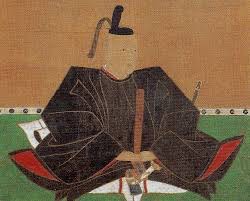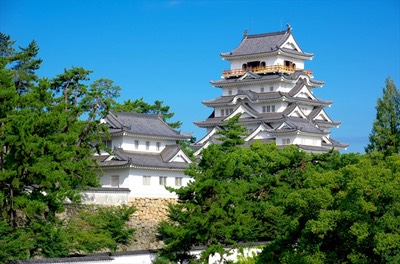Born at Kariya castle, in the province of Mikawa, the strands of Mizuno Katsunari’s clan were closely intertwined with those of the Tokugawa (then still called Matsudaira), who had their headquarters in the nearby castle of Okazaki. His aunt was none other than Ieyasu’s mother, making Katsunari Ieyasu’s direct cousin. Katsunari had made his career in the Tokugawa ranks and had fought numerous battles under Ieyasu, including the famous battles at Komaki and Nagakute (1584), the only time Ieyasu and Hideyoshi ever confronted each other on the field of battle.
It seems that the young Katsunari was possessed of the same fierce temperament as Musashi, for it was during the battle of Nagakute that the young warrior landed himself in trouble when he killed one of his father’s retainers in a fit of anger and he was expelled from Mikawa province for a while. It was partly through the intervention of his cousin, Ieyasu, that relations with his father were restored. Over the following years he continued to serve Ieyasu, most conspicuously so in the run-up to the Battle of Sekigahara, when he distinguished himself in the sieges of the castles of Gifu and Ōgaki.
Exactly how Katsunari and Musashi first met is unclear. The first document to suggest a relationship—if not outright friendship—between Musashi and Katsunari is a recently discovered copy of Musashi’s Heidō kagami addressed to none other than Katsunari himself. Today only copies of the Heidō kagami exist, though their provenance is disputed by some Japanese historians.
The document in question is dated “an auspicious day,” in the twelfth month of the thirteenth year of Keichō (January 1609). This means that Musashi had met and befriended Katsunari by the time he was only twenty-five. This in itself makes sense, since at that age was still living in Edo developing his Enmei school of swordsmanship. By then, Musashi had already made a name for himself by defeating the famed Yoshioka brothers (though this, in turn, is disputed by the Yoshioka-den), and it is not wholly unimaginable that Katsunari had somehow met and practiced with Musashi during his many visits to Edo.
This scenario also provides us with a clue as to how Musashi came to serve Katsunari during the siege of Osaka castle. If Katsunari had come to know Musashi in Edo and had been impressed with his skills it is easier to understand that he would have chosen him to serve as his son’s guard during such a dangerous campaign a few years later.
it must have been their similarly fierce disposition that drew the two warriors together. A man of high birth, Katsunari was very much Musashi’s senior, but the great trust he put in the western warrior was revealed when, in 1615, during the summer campaign against Osaka castle, he appointed Musashi as an attendant to his son Katsutoshi.
More proof of the close relation between Musashi and the house of Mizuno came shortly afterwards, when Musashi, who had no sons of his own, adopted the third (and possibly also the fourth) son of Nakagawa Shimanosuke, who had served Katsunari as musha bugyō, the Magistrate of Warriors, during the siege of Osaka castle, a siege in which he died. Shimanosuke hailed from the province of Ise, where he had been lord of Nakagawabara castle (see Musashi’s Children).
Yet another document to support the close relationship between Musashi and Katsunari is he Sōkyū sama o-degatari, which describes how, in response to criticism at the clamorous arrival of Katsunari’s troops during the siege of Hara castle:
宮本武蔵という者是を聞き、我先年、日向守殿家にこれあり、彼軍立よく知れり、凡慮の及ばざる大将なり、各評判の及ぶ処にあらず。
Miyamoto Musashi remarked that he had rode into battle under Lord Katsunari some years ago and that he was well acquainted with his manner of dispersing the troops, that he was a commander who exceeded the though of commoners, and that his style of leadership was beyond reproach.
It is believed that during the Kan’ei era (1624–29) Musashi visited Mizuno Katsunari (1564–1651) at Fukuyama castle. During his visit he stayed at the yashiki of Nakayama Shigemori, who held a banquet in honor of his guest. A stone which had become Musashi’s favorite place to sit while sojourning in his host’s garden. Though Shigemori’s dashiki has long since been destroyed, the stone has been moved to the precincts of the Bingo Go-kuni shrine, situated on the castle ground’s norther perimeter, where it graces the temple grounds under the name of Musashi Meisō Ishi (Musashi’s Meditative Stone).
Any queries of remarks? Launch or join a discussion at our new FORUM


